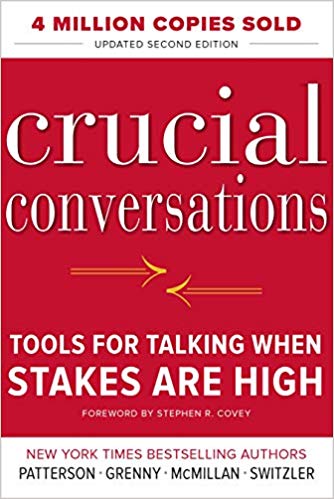

This article is an excerpt from the Shortform summary of "Crucial Conversations" by Kerry Patterson. Shortform has the world's best summaries of books you should be reading.
Like this article? Sign up for a free trial here .
In your daily conversations, do you ever wonder how to disagree? And do you want to know how to disagree respectfully?
During crucial conversations, it’s normal to have some disagreements. But learning how to disagree, and how to disagree respectfully, is an essential skill that is often overlooked.
How to Disagree
Exploring another’s path (facts, story, feelings) when you disagree substantially can be unsettling. But knowing how to disagree, or agree to disagree, is a valuable communication skill.
Remember, you’re trying to understand their point of view, not necessarily agree with or support it. By making an effort to understand it, you’re agreeing to accept it as part of the pool of information; later you can share your point of view too.
So you explore what others think in order to understand why they’re feeling and behaving as they are. This is how you will learn how to handle disagreements, and become a much better communicator.
Remember the ABC’s
When you’re figuring out how to disagree, remember that it’s not about you being right. When it’s your turn to talk, and your story differs a lot from what you just heard, use these three skills.
Agree: Don’t argue when you agree — just agree. Sometimes when people argue strenuously, they’re arguing over nuances. They actually agree on the important points. Most arguments are about the 5% to 10% of the facts and stories that people disagree on.
Although people eventually need to work through all their differences, you shouldn’t start with the nuances, but with an area of agreement. If you completely agree with the other person’s path, say so and move on.
Build: Look for points of agreement, and talk about those first. Then build by adding information that has been left out. (“I agree completely. In addition, I noticed that…”)
Instead of building on what we agree on, we tend to immediately jump on small points of disagreement, which we magnify. We learn from an early age to look for minor errors. In school, we learn that finding even the smallest errors in others’ facts or thinking wins praise and admiration from teachers and peers. Being right at the expense of others becomes a competition.
Instead of constructive dialogue, you end up in “violent agreement,” or arguing strenuously even though you mostly agree.
Compare: When you do disagree, compare your path with the other person’s. Don’t suggest they’re wrong, suggest that you differ. The person may in fact be wrong, but you can’t be sure until you understand both sides — you just know that you differ.
Instead of starting with “Wrong!”, start with a tentative but honest, “I think I see things differently. Let me explain.” Then share your path using STATE skills. (Share your facts, Tell your story, Ask for others’ paths, Talk tentatively, Encourage testing.) Agree to disagree: this isn’t about you being right. It’s about building understanding.
How to Disagree: Don’t Go Overboard
You can get into trouble by pushing your point of view too hard. It gets heated and you feel you have to win. Others resist, argue, or retreat into silence, so you push harder. In the end, no one is listening, and nothing is added to the pool of information. Knowing how to disagree respectfully can help you get back on course.
Here’s how things go wrong.
- You feel you’re right. When you push your ideas on others, it’s generally because you feel you’re right and they’re wrong. You feel there’s no need to expand the pool of information because you have the answer.
- You feel justified in using verbal tricks. You stack the deck with supporting information, leaving out any contrary information; or you exaggerate or use inflammatory language. But the more forceful you become, the more resistance you generate.
How to Change
Maybe you’re not concerned with how to disagree. Maybe you just want to convince someone. While that’s tempting, keep in mind that the idea of “agree to disagree” can build a much more valuable conversation. When you feel compelled to convince others that your way is best:
- Stop.
- Think about what you really want. Ask yourself, how you should behave to achieve what you want.
- Use your STATE skills
- Share your facts
- Tell your story
- Ask for others’ paths
- Talk tentatively
- Encourage testing
- Monitor conditions: Notice when people start to resist. Notice what you’re doing — for instance, leaning forward, getting louder, filibustering, etc. The more strongly you feel, the more likely you are to go overboard.
- Tone it down: Open your mind to the idea that others might have something relevant to say and ask them for their views. This isn’t easy— backing off when you feel strongly is counterintuitive, but passion can work against you.
- Stop yourself: When you start to feel frustrated that others aren’t getting it, be aware you’re on an unproductive path and back off. Hold onto your belief but moderate your approach.
Learning how to disagree can be challenging in high-stakes crucial conversations. But knowing how to handle disagreements is a skill that you’ll need in order to have productive communications.

———End of Preview———
Like what you just read? Read the rest of the world's best summary of Kerry Patterson's "Crucial Conversations" at Shortform .
Here's what you'll find in our full Crucial Conversations summary :
- How to approach an argument without getting mad
- The mistakes most people make when trying to listen to someone else
- How to come up with win-win solutions that make everyone happy






